Hiroshima, a city known worldwide for its historical significance, has evolved into a vibrant and thriving metropolis that offers visitors a mix of poignant history, natural beauty, and cultural richness. Whether you’re a history buff, nature lover, or culture enthusiast, Hiroshima has something to offer everyone. In this guide, we’ll take you through some of the must-visit tourist destinations in Hiroshima, each with its unique charm and story.
9 Tourists Destination
1. Hiroshima Peace Memorial Park
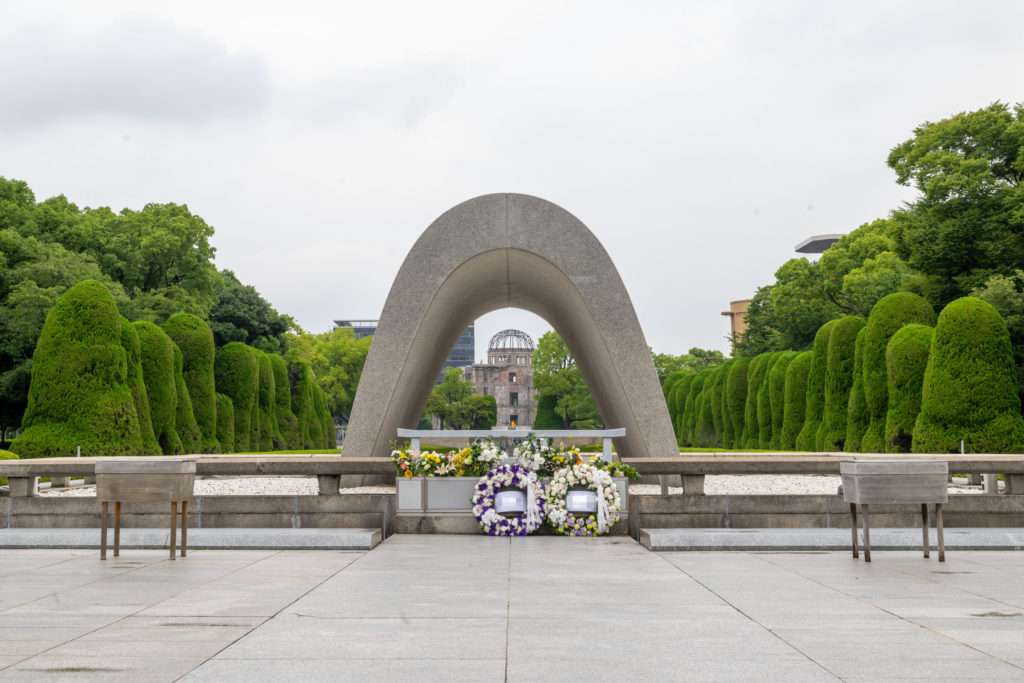
No visit to Hiroshima is complete without paying respects at the Hiroshima Peace Memorial Park. Located at the epicenter of the atomic blast on August 6, 1945, this park serves as a poignant reminder of the horrors of war and a symbol of peace. The park is home to several monuments, museums, and memorials dedicated to the victims of the atomic bomb.
- Features: A serene park dedicated to the victims of the atomic bombing. Key attractions within the park include the Atomic Bomb Dome, Peace Memorial Museum, and the Cenotaph for the A-Bomb Victims.
- Highlights: The museum offers a poignant and educational experience about the bombing’s impact and the importance of peace.

2. Atomic Bomb Dome
The most iconic structure within the park is the Atomic Bomb Dome (Genbaku Dome), a UNESCO World Heritage Site. Originally the Hiroshima Prefectural Industrial Promotion Hall, the building was one of the few structures that remained standing after the bomb was dropped. Today, it stands as a powerful symbol of resilience and a stark reminder of the destructive power of nuclear weapons.
- Features: A UNESCO World Heritage Site, this is the ruin of the former Hiroshima Prefectural Industrial Promotion Hall. It’s preserved as a symbol of the city’s resilience and as a reminder of the devastation.
- Highlights: The dome is located within the Peace Memorial Park and provides a striking visual representation of the bomb’s impact.
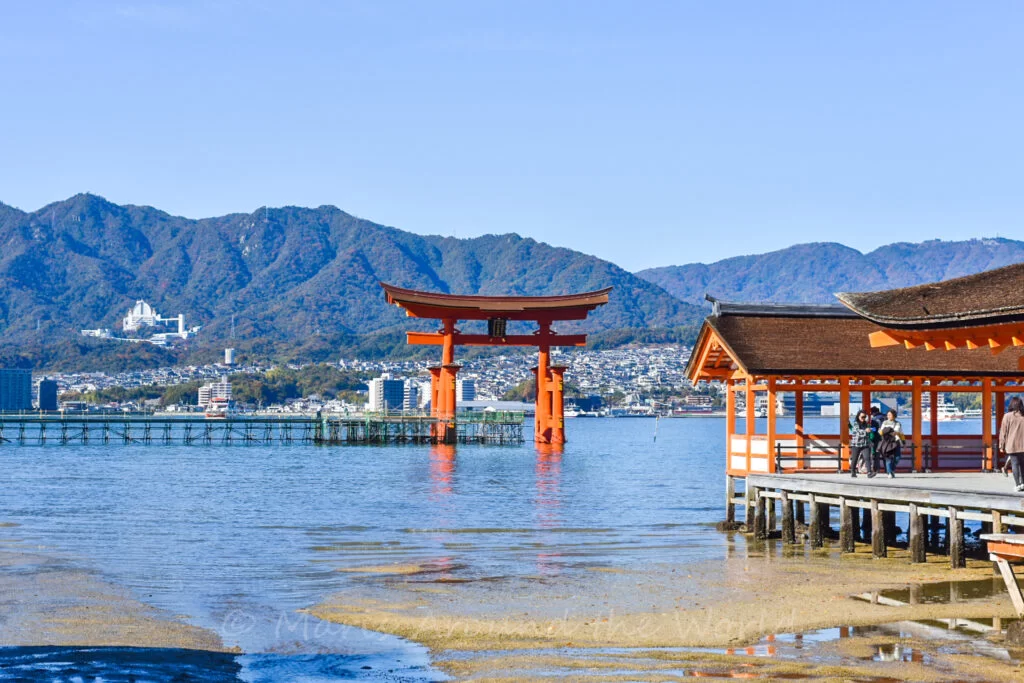
3. Miyajima Island (Itsukushima)
A short ferry ride from Hiroshima City will take you to Miyajima Island, one of Japan’s most scenic spots. The island is famous for its Itsukushima Shrine, a UNESCO World Heritage Site known for its iconic “floating” torii gate. The shrine’s torii gate appears to float on water during high tide, creating a breathtaking view that has made it one of Japan’s most photographed sites.
Beyond the shrine, Miyajima offers beautiful hiking trails, lush forests, and friendly deer that roam freely. A hike up Mount Misen, the island’s highest peak, rewards visitors with panoramic views of the Seto Inland Sea and the surrounding islands. The island is also known for its delicious local cuisine, including fresh oysters and the savory treat known as momiji manju, a maple leaf-shaped cake filled with sweet red bean paste.
- Features: Famous for Itsukushima Shrine with its iconic “floating” torii gate, which appears to float on the water during high tide. The island is also known for its beautiful scenery and wild deer.
- Highlights: The island offers hiking trails, beautiful beaches, and traditional Japanese temples.

4. Shukkeien Garden
Just a short walk from Hiroshima Castle lies Shukkeien Garden, a serene oasis in the heart of the city. This traditional Japanese garden was created in 1620 and is designed to mimic natural landscapes in miniature. The garden features a central pond, stone bridges, tea houses, and meticulously manicured trees and shrubs.
Shukkeien Garden is a perfect place to relax and enjoy the beauty of nature. Each season brings a new palette of colors, from the vibrant azaleas in spring to the fiery red maple leaves in autumn. The garden’s tranquil atmosphere makes it a favorite spot for both locals and tourists looking to escape the city’s hustle and bustle.
- Features: A historic Japanese garden located in the heart of Hiroshima. It features ponds, tea houses, and carefully landscaped scenery.
- Highlights: It’s a peaceful retreat with beautiful landscapes, ideal for a relaxing stroll.

5. Hiroshima Castle
For a glimpse into Hiroshima’s feudal past, visit the Hiroshima Castle. Originally built in the 16th century, the castle was destroyed by the atomic bomb but was later reconstructed. The castle grounds are now a beautiful park, surrounded by a moat and featuring a five-story main keep. Inside, the castle houses a museum that showcases the history of Hiroshima, including samurai artifacts and exhibits on the city’s development.
During cherry blossom season, Hiroshima Castle becomes a popular spot for hanami (flower viewing) parties, with the castle and its surroundings bathed in the soft pink hues of blooming sakura trees.
- Features: Also known as Carp Castle, it was originally built in the 1590s and reconstructed after World War II. The castle features a museum inside and provides panoramic views of Hiroshima from the top.
- Highlights: The surrounding grounds are also pleasant for a walk, and the castle’s traditional architecture is noteworthy.
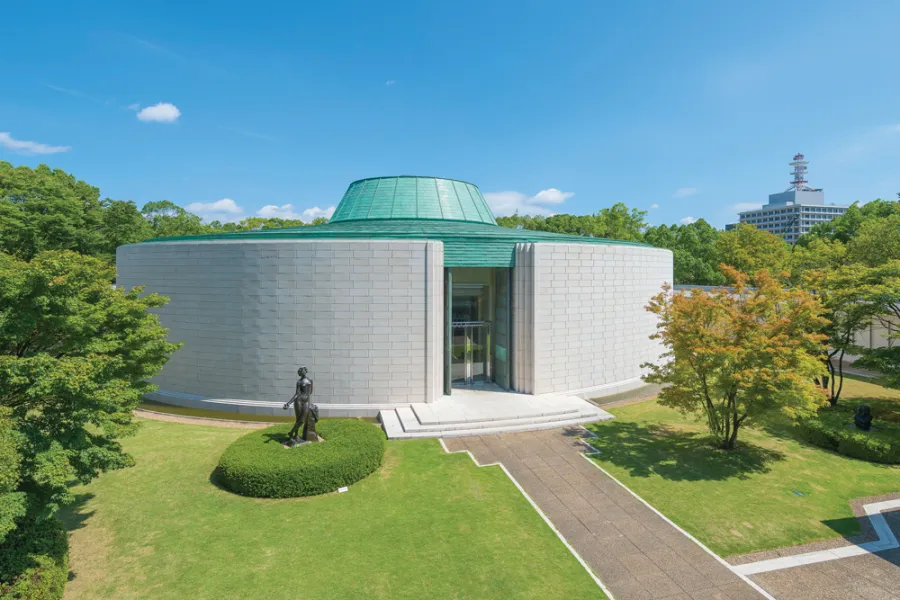
6. Hiroshima Museum of Art
Art enthusiasts should not miss the Hiroshima Museum of Art, which boasts a diverse collection of European and Japanese art. The museum’s European collection includes works by masters such as Monet, Van Gogh, and Picasso, while the Japanese collection features pieces from the Edo period to modern times.
The museum is located in a picturesque park and is housed in a building that combines Western and Japanese architectural elements. It provides a quiet and reflective space to appreciate the beauty and creativity of different cultures, offering a different perspective on Hiroshima’s rich cultural heritage.Art enthusiasts should not miss the Hiroshima Museum of Art, which boasts a diverse collection of European and Japanese art. The museum’s European collection includes works by masters such as Monet, Van Gogh, and Picasso, while the Japanese collection features pieces from the Edo period to modern times.
The museum is located in a picturesque park and is housed in a building that combines Western and Japanese architectural elements. It provides a quiet and reflective space to appreciate the beauty and creativity of different cultures, offering a different perspective on Hiroshima’s rich cultural heritage.
- Features: Houses a collection of European and Japanese art, including works from the Renaissance to modern times.
- Highlights: The museum offers a diverse range of art exhibitions and is an excellent stop for art enthusiasts.
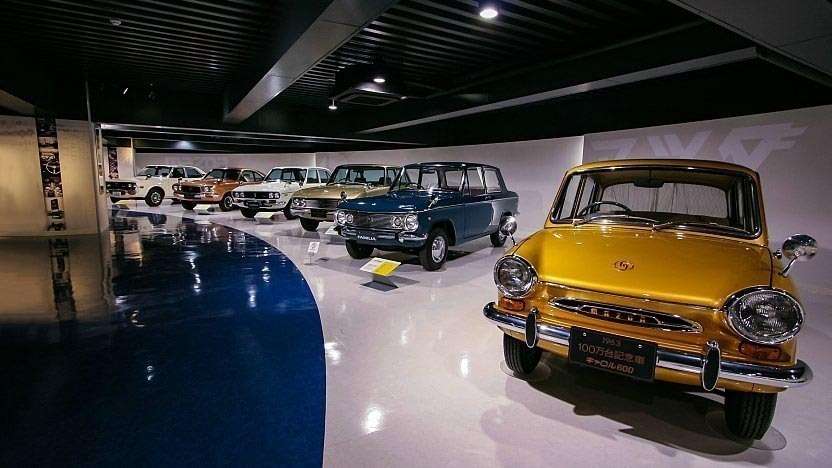
7. Mazda Museum
- Features: The headquarters of Mazda is located in Hiroshima, and the museum offers tours that showcase the history and technology behind Mazda vehicles.
- Highlights: The tour provides insight into automotive innovation and the company’s impact on the industry.
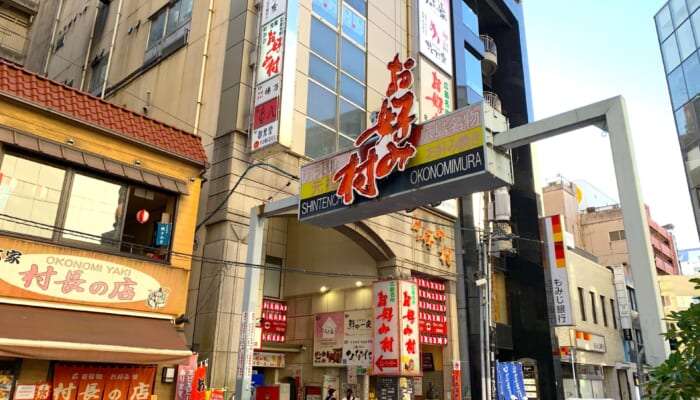
8. Okonomiyaki Village
- Features: A food district dedicated to Hiroshima-style okonomiyaki, a savory pancake with various ingredients.
- Highlights: It’s a great place to experience local cuisine and watch chefs prepare okonomiyaki.

9. Mitaki-dera Temple
- Features: A historic temple located in the mountains surrounding Hiroshima. Known for its beautiful gardens and tranquil atmosphere.
- Highlights: The temple offers a peaceful escape and beautiful views of the city.
These destinations reflect Hiroshima’s blend of historical significance, cultural richness, and natural beauty.
YOU MY ALSO LIKE




